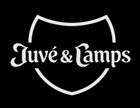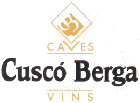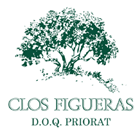Mata I Coloma
Pere Mata
by
Kathy and Terry Sullivan
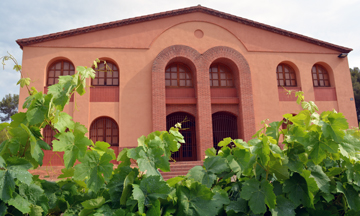 Summary: Mata I Coloma, on the outskirts of Sant Sadurni d’Anoia, is focused on creating cavas and wines from organic grapes from the bodegas vineyards and other grape growers. Pere Mata, winemaker, is intent upon using organic yeasts from his vineyards.
Summary: Mata I Coloma, on the outskirts of Sant Sadurni d’Anoia, is focused on creating cavas and wines from organic grapes from the bodegas vineyards and other grape growers. Pere Mata, winemaker, is intent upon using organic yeasts from his vineyards.
When we visited Mata I Coloma, we were inspired by the impressive large brick building, standing behind a wrought iron gated fence. Arched windows on the front of the building add to the character of the winery. Built in 2000, vineyards surround the building that also has small gardens showing a variety of plants including herbs. The winery is the result of a man with a passion for creating quality cavas with indigenous yeasts and organic grapes.
History
We discovered Pere Mata to be an energetic and creative owner and winemaker. Pere discovered his way to cava production while working at a winery during harvest when studying at the university. He enjoyed the experience and decided to study enology. His father was willing to give Pere land that could only be developed as a winery and vineyards. This was a fortuitous revelation. Pere went on to receive an enology degree and his father built a winery in a prime location just on the outskirts of Sant Sadurni d'Anoia.
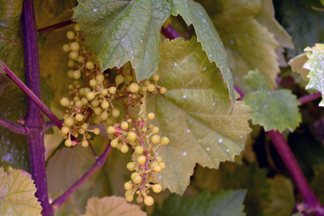 Vineyards
Vineyards
Today the winery has several hectares of organic Macabeo and Xarel.lo. Pere also sources Parellada, Macabeo and Xarel.lo from other growers. All of his wines are organic and according to legal requirements he will have permission to add the organic emblem to wine bottles soon. It takes three years of analyzing vineyards after one applies for organic certification. Pere likes wines made with organic grapes. He told us, “I have tasted the wines and I really think organic wines are better.” Although organic grapes are very important to Pere, he has no plans to pursue biodynamic practices noting that biodynamics is a way of life and should be practiced in both the vineyard and winery, not just in the vineyard.
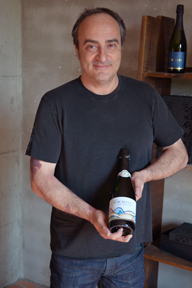 Winemaking
Winemaking
Pere likes to experiment on some of his base wines. He explained that the type of yeast he uses is very important to him. He experimented with natural yeast from his vineyards and likes the result. Noting that he does not like the aromas when indigenous yeasts begin fermenting the juice, Pere develops a strain of yeast that does not produce those off odors at the start of fermentation. His protocol involves harvesting a small quantity of grapes from his vineyard. He allows spontaneous fermentation to begin. After ten to twelve days, the yeasts that began the fermentation have died off, and the current strain of yeast are pitched into the juice for cava base wines.
Pere plans to use the indigenous yeasts from his vineyards to vinify his base wines including those grapes he sources from other growers. Pere sees cava as “a personal wine made by the winemaker.” He is not interested in making a house-style cava that is exactly the same year after year. It is expected that the dominant yeasts from his vineyard will change from year to year as will the cava base wines. Pere ages his cavas for two years minimum and as long as four years. He also ferments some Xarel.lo in barrels.
The cellars are six meters (20 feet) below the surface. Although there are a few cement riddling racks, most of the cavas are riddled in a gyropalette. The bottling line and disgorging equipment are on the ground floor of the winery.
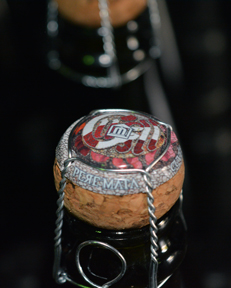 We were pleasantly surprised by the designs on the chapas that Pere uses. Be sure to take a moment to observe the chapas from Pere Mata cavas. Chapas are the thin piece of metal covering the top of the cork. The designs used by Pere Mata are among the best in the industry. They change frequently.
We were pleasantly surprised by the designs on the chapas that Pere uses. Be sure to take a moment to observe the chapas from Pere Mata cavas. Chapas are the thin piece of metal covering the top of the cork. The designs used by Pere Mata are among the best in the industry. They change frequently.
Over the next few years, Pere plans to increase production. Watch for future releases of Pere Mata wines and cavas.
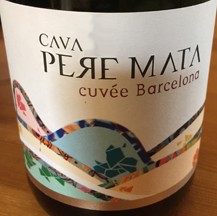 Pere Mata Cavas
Pere Mata Cavas
Brut Gran Reserva was a light yellow color with multiple streams of beads forming a mousse on the surface. The mouthfeel was nice. The cava aroma was of apple, citrus and pear. The taste offered notes of apple, and baked bread. The finish had apple notes.
The 2009 Reserva Familia Brut Nature Gran Reserva was a blend of 50% Macabeo, 30% Xarel.lo and 20% Parellada. The light yellow colored cava had beads of bubbles forming a mousse on the surface. White peaches were on the aroma, while white peaches and petrol were on the taste. The cava finished with white peaches.
The 2008 L'Ensamblatge Brut Nature Gran Reserva was blended with 38% Macabeo, 34% Parellada and 28% Xarel.lo. Columns of bubbles formed a surface mousse. The aroma had apple and peach . The taste was like a fruit salad. The finish was fruity with a hint of chalk.
At this time, the winery is not open for visitors.
Article written June 2015
Please support the following.
 |
|||
 |
 |
